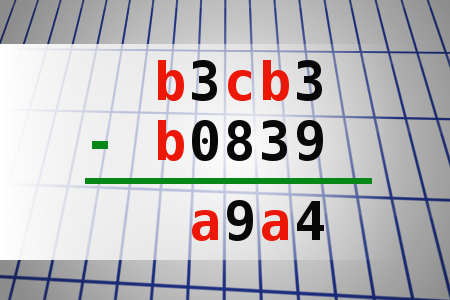Find number abc
If b3cb3 - b0839 = a9a4 find number abc. Multiple solutions may exist.
Not Afraid
A few minutes before the church services started, the congregation was sitting in their pews and talking. Suddenly, Satan appeared at the front of the church.
Everyone started screaming and running for the back entrance, trampling each other in a frantic effort to get away from evil incarnate. Soon the church was empty except for one elderly gentleman who sat calmly in his pew without moving, seemingly oblivious to the fact that God's ultimate enemy was in his presence.
So Satan walked up to the man and said, 'Do you know who I am?'
The man replied, 'Yep, sure do.'
Aren't you afraid of me?' Satan asked.
'Nope, sure ain't.' said the man.
Don't you realize I can kill you with one word?' asked Satan.
Don't doubt it for a minute, ' returned the old man, in an even tone.
'Did you know that I can cause you profound, horrifying agony for all eternity?' persisted Satan.
Yep,' was the calm reply.
'And you're still not afraid?' asked Satan.
'Nope,' said the old man.
More than a little perturbed, Satan asked, ' Why aren't you afraid of me?'
The man calmly replied, 'Been married to your sister for 48 years.'

